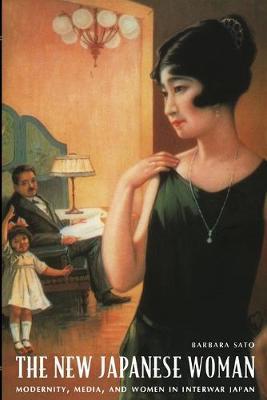The New Japanese Woman: Modernity, Media, and Women in Interwar Japan

The New Japanese Woman: Modernity, Media, and Women in Interwar Japan
The New Japanese Woman is rich in descriptive detail and full of fascinating vignettes from Japan's interwar media and consumer industries--department stores, film, radio, popular music and the publishing industry. Sato pays particular attention to the enormously influential role of the women's magazines, which proliferated during this period. She describes the different kinds of magazines, their stories and readerships, and the new genres the emerged at the time, including confessional pieces, articles about family and popular trends, and advice columns. Examining reactions to the images of the modern girl, the housewife, and the professional woman, Sato shows that while these were not revolutionary figures, they caused anxiety among male intellectuals, government officials, and much of the public at large, and they contributed to the significant changes in gender relations in Japan following the Second World War.
PRP: 264.56 Lei
Acesta este Pretul Recomandat de Producator. Pretul de vanzare al produsului este afisat mai jos.
238.10Lei
238.10Lei
264.56 LeiLivrare in 2-4 saptamani
Descrierea produsului
The New Japanese Woman is rich in descriptive detail and full of fascinating vignettes from Japan's interwar media and consumer industries--department stores, film, radio, popular music and the publishing industry. Sato pays particular attention to the enormously influential role of the women's magazines, which proliferated during this period. She describes the different kinds of magazines, their stories and readerships, and the new genres the emerged at the time, including confessional pieces, articles about family and popular trends, and advice columns. Examining reactions to the images of the modern girl, the housewife, and the professional woman, Sato shows that while these were not revolutionary figures, they caused anxiety among male intellectuals, government officials, and much of the public at large, and they contributed to the significant changes in gender relations in Japan following the Second World War.
Detaliile produsului








